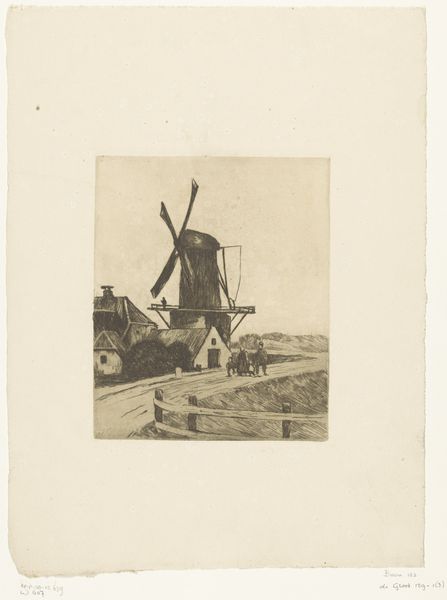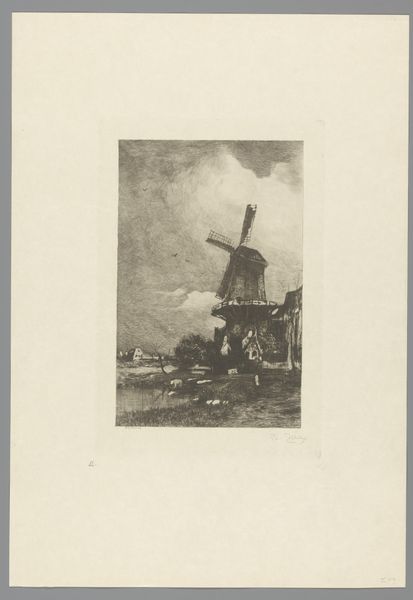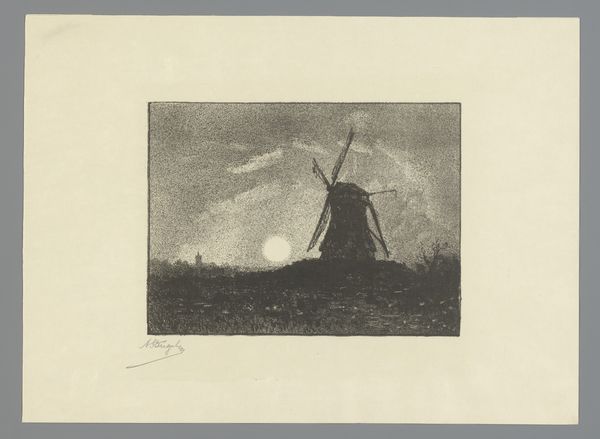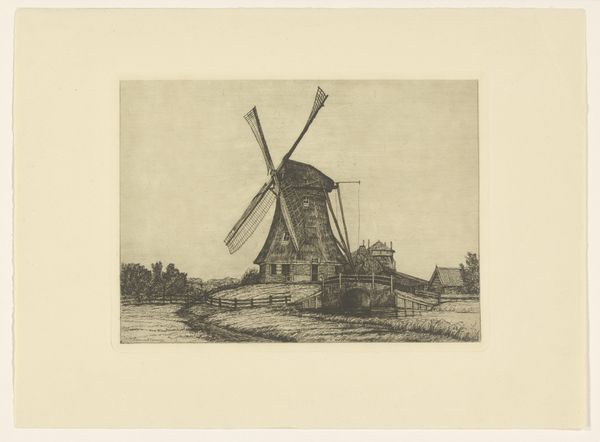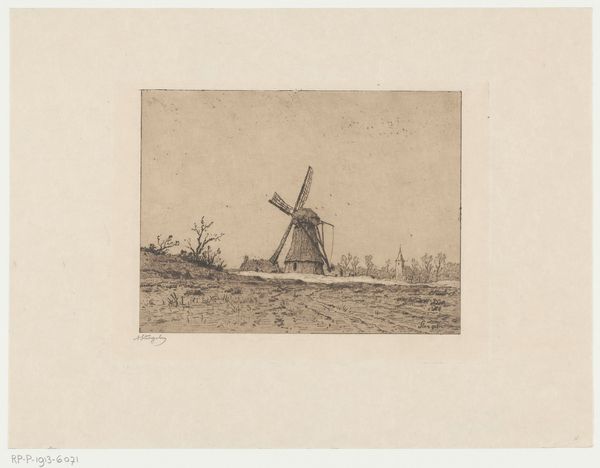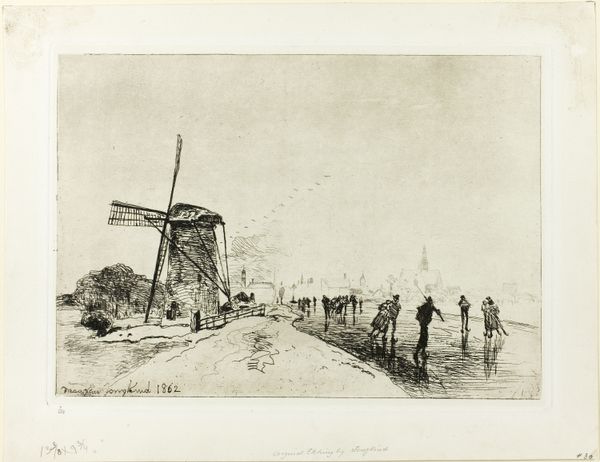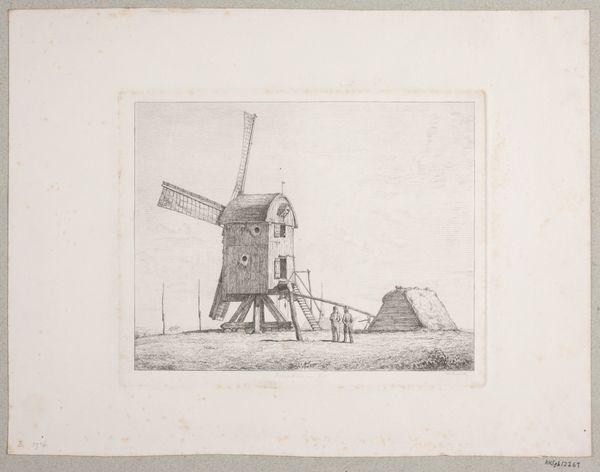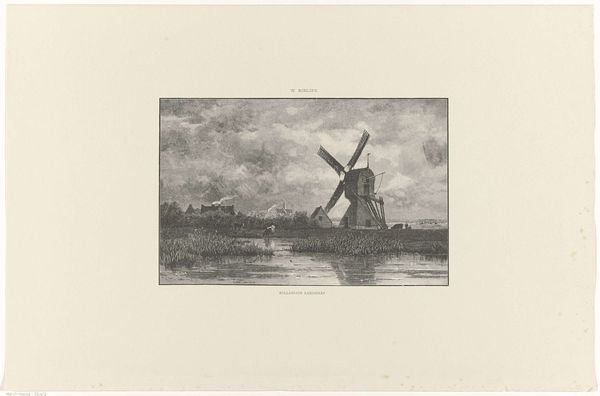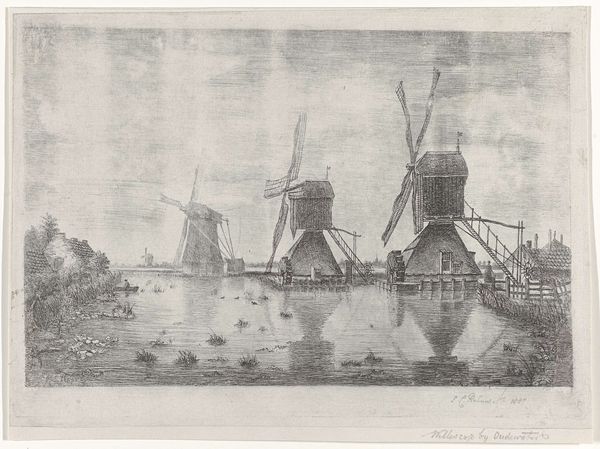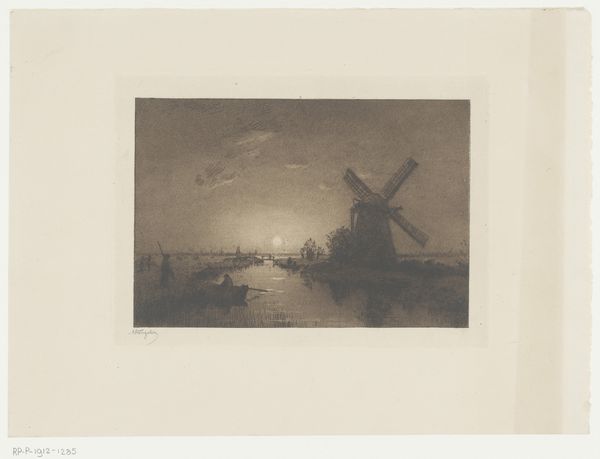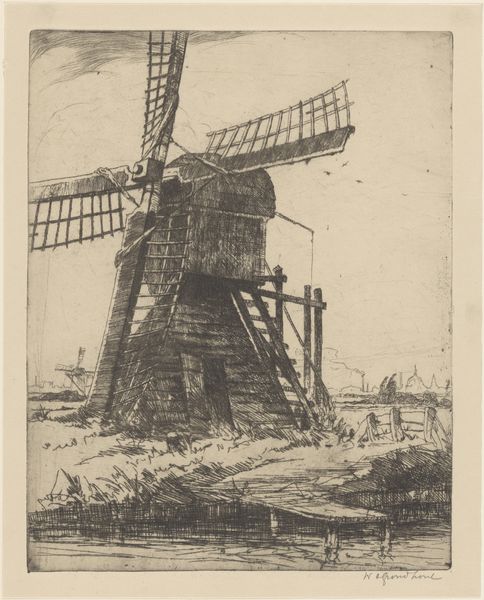
Wipmolens aan de Vlist tussen Haastrecht en Schoonhoven Possibly 1903 - 1928
0:00
0:00
print, etching
#
dutch-golden-age
# print
#
etching
#
landscape
#
river
#
personal sketchbook
Dimensions: height 138 mm, width 188 mm
Copyright: Rijks Museum: Open Domain
Curator: This etching by Wijnand Otto Jan Nieuwenkamp, potentially created between 1903 and 1928, is titled "Wipmolens aan de Vlist tussen Haastrecht en Schoonhoven." Editor: It's quite striking; a somber and evocative composition with a strong emphasis on texture. The detailed cross-hatching gives a palpable sense of the wind and dampness characteristic of the Dutch landscape. Curator: The landscape itself is certainly integral here. We're seeing the utilization of wind power not as an isolated incident, but within the daily life of laborers and millers navigating the watery terrain of the Dutch countryside. Nieuwenkamp presents it as part of an intricate and integrated network. Editor: Agreed. The compositional balance is key, too. Notice how the tallest windmill is offset to the left, anchoring the image, while the others diminish in scale, guiding the eye across the landscape. Curator: Absolutely. The printing process also needs considering; etching lends itself particularly well to the atmospheric depiction, as these linear elements and tonal modulations speak to how labor and artistry influence environmental adaptation and resource use within society. The medium mirrors the industriousness depicted! Editor: Interesting point. But beyond its socio-economic implications, the print is simply a compelling example of graphic art. The stark contrast, the clever use of negative space to suggest light… it possesses a timeless quality, resonating on a purely aesthetic level. The textures achieved really make the windmills into a marvel to look at. Curator: Though, what's also remarkable is Nieuwenkamp's depiction of daily life. See the figures on the bridge. These weren’t picturesque details but highlight that these industrial tools depended on real humans, forming critical intersections between material progress and societal living standards. Editor: True, but the effectiveness relies as much on the skilled application of the etching technique as it does on the narrative. If you imagine this rendered in a less nuanced medium, it loses impact despite its intent. Curator: An interesting discussion about our role within our ecological networks and technological dependencies – still resonant now. Editor: Indeed – I'm glad we paused to contemplate this picturesque print today.
Comments
No comments
Be the first to comment and join the conversation on the ultimate creative platform.

